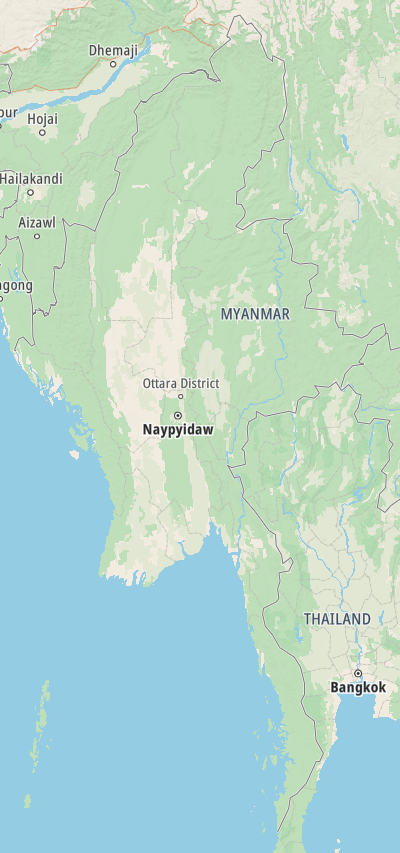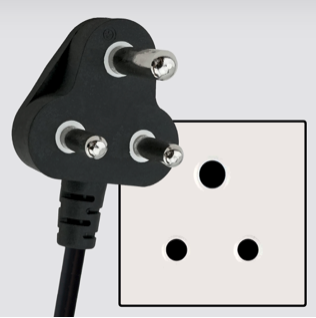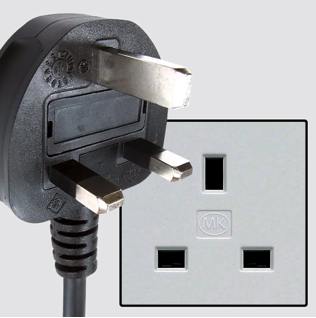Myanmar / ပြည်ထောင်စု သမ္မတ မြန်မာနိုင်ငံတော် – Let’s explore here

What’s it like in Myanmar?
Myanmar, formerly known as Burma, is a stunningly country in south eastern Asia. Slightly larger than France, the country contains numerous mountains ranges, including part of the Himalayas. The highest point is Hkakabo Razi, in the far north of the country, at 19,295 ft (5,881 m) above sea level.
It has a very long, rich and troubled history. It relies heavily on its precious stones reserves, in particular rubies, for which it is the world’s greatest exporter.
The population of Myanmar is around 56 million people (2022), just under 1 million of whom live in the metropolitan area of the capital, Naypyidaw. By contrast, around 7½ million live in its most populous city, Yangon. Its neighbours include Bangladesh, China, India, Laos and Thailand.


A bit about the history of Myanmar
Early History and Kingdoms
Myanmar, formerly known as Burma, has a history that stretches back over 2,000 years. Early inhabitants of the region established various kingdoms and civilisations, most notably the Pyu city-states in the 1st century BC, which were influenced by Indian culture and Buddhism. The Bagan Kingdom, founded in the 9th century, was the first unified kingdom of Myanmar. It became a powerful center of culture and religion, with the construction of thousands of temples, pagodas, and stupas, and the spread of Theravada Buddhism.
The Pagan Empire and Decline
The Pagan Kingdom flourished for several centuries, with its peak during the 11th and 12th centuries under King Anawrahta. However, the kingdom began to decline in the 13th century due to Mongol invasions. Following the fall of the Pagan Empire in the late 13th century, Myanmar was divided into various smaller kingdoms, including the Taungoo and Ava kingdoms, which continued to contend for dominance over the region.
The Konbaung Dynasty and Colonial Rule
In the early 19th century, the Konbaung Dynasty emerged and reunified Myanmar. The dynasty strengthened the nation’s military and centralised control, though tensions with neighbouring British India grew. This led to the Anglo-Burmese Wars, the first of which took place in 1824. Following successive defeats, Myanmar was annexed by the British after the third Anglo-Burmese War in 1885. Myanmar became a province of British India, and during this period, the British exploited the country’s resources, particularly in agriculture and minerals.
Japanese Occupation During World War II
During World War II, Myanmar was occupied by Japan from 1942 to 1945. The Japanese sought to gain control of south east Asia and used Myanmar as a base for operations in the region. Burmese nationalists, led by Aung San, initially cooperated with the Japanese in hopes of achieving independence, but they eventually turned against the Japanese as it became clear that the Japanese occupation was detrimental to Myanmar’s interests. After the defeat of Japan, Myanmar returned to British control.
Independence and Early Struggles
Myanmar gained independence from Britain on January 4, 1948, and became a republic. Aung San, a prominent leader in the independence movement, was assassinated in 1947, leaving a power vacuum and leading to internal instability. Despite initial hopes for democratic governance, the country was soon plagued by ethnic conflicts, insurgencies and economic challenges. The government struggled to manage the country’s diverse ethnic groups, many of whom sought autonomy.
Military Rule and the 1962 Coup
In 1962, General Ne Win led a military coup, overthrowing the democratically elected government. Ne Win’s military regime imposed a socialist system, nationalising industries and restricting foreign investment. Under his rule, Myanmar became increasingly isolated from the rest of the world, with a focus on self reliance. However, the economy stagnated, and the government faced growing opposition from ethnic groups and pro-democracy activists.
The 1988 Uprising and Military Junta
In 1988, a pro-democracy uprising erupted across Myanmar, demanding an end to military rule. The regime responded with violence, and thousands of protesters were killed. In the aftermath, the military junta reasserted control, leading to the establishment of the State Law and Order Restoration Council (SLORC). Despite claims of democratisation, the junta maintained tight control over the country, leading to international sanctions and condemnation.
The 1990 Elections and the Rise of Aung San Suu Kyi
In 1990, Myanmar held its first multiparty elections in decades. The National League for Democracy (NLD), led by Aung San Suu Kyi, won a landslide victory, but the military junta refused to recognise the results and continued to hold power. Aung San Suu Kyi, who had become an international symbol of resistance, was placed under house arrest for many years, and the military regime continued to suppress opposition movements.
Transition to Semi-Democracy
During the early 2010s, Myanmar began to transition toward a more democratic system. In 2011, the military junta officially dissolved itself and allowed for civilian governance. In 2015, Myanmar held its first fully free elections in decades, in which the NLD, led by Aung San Suu Kyi, won a historic victory. Aung San Suu Kyi became the de facto leader of Myanmar, although the military retained significant influence, particularly over the country’s constitution and military affairs.
The Rohingya Crisis
During the 2010s, Myanmar’s government faced international condemnation for its treatment of the Rohingya, a Muslim minority group. In 2017, a military crackdown in the Rakhine State led to widespread reports of human rights abuses, including killings, rapes, and forced displacement of hundreds of thousands of Rohingya Muslims to neighbouring Bangladesh. The crisis sparked global outcry and calls for accountability, but Myanmar’s military and government denied any wrongdoing.
2021 Military Coup and Current Situation
In February 2021, the military staged a coup against the elected government, detaining its leaders. The coup followed claims of electoral fraud in the 2020 general election, which the NLD won. The coup led to widespread protests and civil disobedience, with security forces using lethal force against demonstrators. The military junta has continued to hold power, leading to ongoing political instability and violence. The coup has also exacerbated ethnic conflicts within the country, and Myanmar remains divided, with armed resistance movements and ethnic militias engaging in ongoing battles against the military. The international community has largely condemned the coup, but Myanmar’s political future remains uncertain.

Myanmar road trip
Map of our route through Myanmar

We haven’t finished our planning for our road trip through though Myanmar yet. When we do though, we’ll post it here, and in the blog.
Hopefully our journey will improve our knowledge of this intriguing and beautiful country, and enable us to meet some interesting people. We’ll be updating this page at that time – don’t forget to check back 🙂
What’s it like to drive in Myanmar?
They drive on the right hand side of the road in Myanmar. In the main, roads are very poor, with many being unsurfaced dirt tracks. Driving standards are also poor.
Do you require an international driving permit in Myanmar?
We’ve created a dedicated page to driving abroad, which answers this question, and more, which you might find helpful.
Can you use your UK driving license when driving through Myanmar?
We’ve created a dedicated page to driving abroad, which answers this question, and more, which you might find helpful.
Do I need a carnet de passages to drive in Myanmar?
A carnet de passages is required to overland in Myanmar. We’ve created a dedicated page to driving abroad, which answers this question, and more, which you might find helpful.
Is the border open to drive into Myanmar?
Unfortunately, all land borders into Myanmar are currently closed for overlanding (2024), due to the military coup in 2021.
What currency do they use in Myanmar?
In Myanmar they use the Myanmar kyat, although US dollars are also widely accepted. Cash is widely used. The use of credit / debit cards is not widely accepted. Travellers cheques are not readily accepted. There are many ATMs in cities and towns throughout the country.
You should make yourself aware of the amount that your bank charges you for using credit and debit cards abroad. Often credit cards are cheaper for purchasing items directly, and for withdrawing cash from ATMs.
What language do they speak in Myanmar?
They speak Burmese in Myanmar, although many also speak Shan. English is also widely spoken.
What time zone is Myanmar in?
Remember, when you’re planning your next trip to take a look at what time zone it’s in.
Do I need a visa to visit Myanmar?
We’ve created a dedicated, more comprehensive page on visas, which you should find helpful. Check it out!
Is wild camping legal in Myanmar?
Yes, wild camping is fine in Myanmar, although make sure the land is not private or used for cultivation of drugs.
What plug / socket type do they use in Myanmar?
In Myanmar they use plug / socket types C, D, F and G.




Health issues in Myanmar
Is it safe to drink water in Myanmar?
No, it is not safe to drink tap water in Myanmar. Bottled water is readily available throughout the country.
What vaccinations are required for Myanmar?
This NHS website is kept up to date with all relevant information on vaccinations in Myanmar.
Phones in Myanmar
What is the country calling code for Myanmar?
The country calling code for Myanmar is +95
What are the emergency phone numbers in Myanmar?
- The emergency number for police in Myanmar is: 999 / 199
- In Myanmar, the emergency number for ambulance is: 999 / 192
- The emergency number for fire in Myanmar is: 999 / 191
If you’ve got some useful info that you’d like to share, let us know!
And don’t forget to check out all the other pictures!
